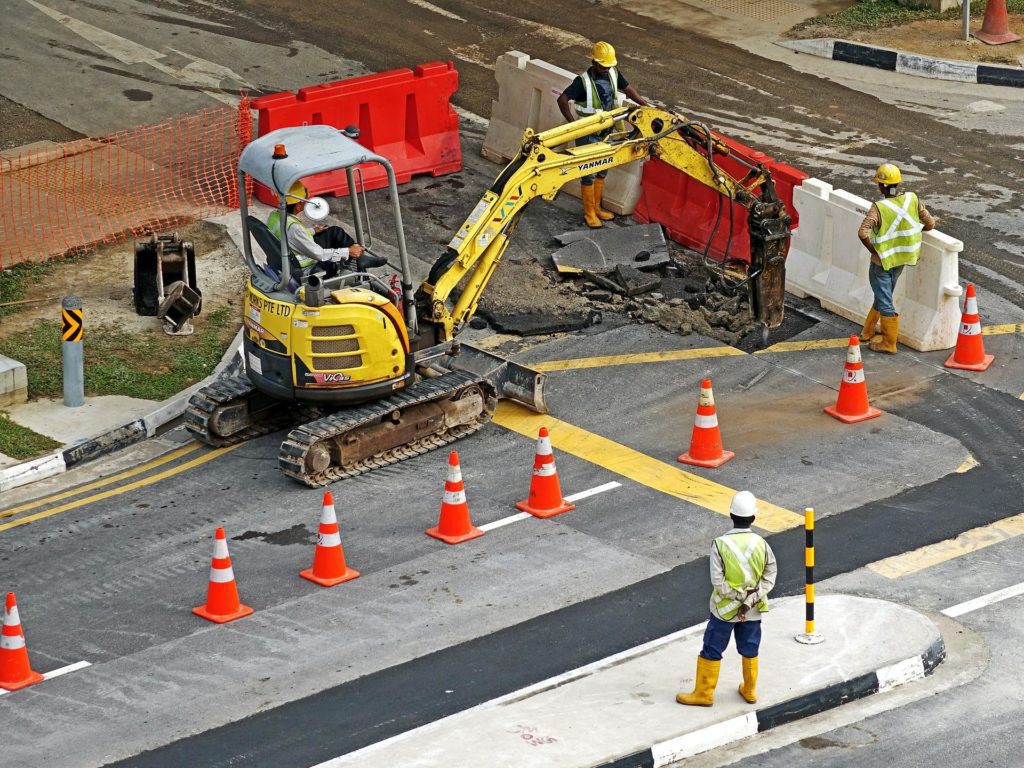Underground Utility Locator Safety is a high priority! Working outdoors and using an underground utility locator is prone to many safety hazards. It holds especially true for projects like utility locating or excavation work. Digging up the ground where underground pipes, cables, and lines present many natural and manufactured dangers.
Moreover, it is important to observe underground utility locator safety for the utmost precaution to ensure everyone's safety with the success of any project. Effective planning includes mitigation measures, utility infrastructure investigations, damage prevention, and utility locating for issues identified during preliminary surveillance.

What are some examples of Underground Utility Locator Safety Practices?
Call Before You Dig
An avoidable and easy common mistake is accidentally damaging or hitting a utility line. To do so, always call an underground utility expert before you dig. It holds even for utility projects that may seem straightforward.
Moreover, like 811, it is the national call number for preventing the unintentional striking of underground utility lines. Before excavation, call your national number to request help flagging the approximate locations of buried utilities in the area you plan to excavate.
Plan Effectively
Every project is unique that has its scope, location, budget, and schedule. Contractors will have to develop a plan that will please the client while also ensuring the workers' well-being and safety, depending on these factors.
But utility locating happens outside where unpredictable circumstances and safety hazards abound. Therefore, one should prepare a contingency for all possible scenarios that might take place.
Cave-Ins Prevention
Cave-ins or collapsed tunnels are among the most common accidents experienced by utility locators when working with underground utilities or doing excavation work.
To prevent this, utility contractors should test the soil build structures, design, and composition that will function as support and provide its shielding. Testing the soil ahead of time will allow them to assess the likelihood of a cave-in. It will support beams to prevent tunnel collapse, and shields can protect workers in a cave-in.
Creating A Utility Map
Before excavation, it's also good to devise a utility map before starting any utility service project. After all, some unknown underground utility lines or private utility cables are unaware of their information. It sometimes may not be updated.
To build a utility map, you can use old utility maps for reference but never use them to guide your excavation. Utility maps need to be updated to create one right before a new project is the best way to avoid accidents.
Designing Barriers and Walkways
Human error is still a huge risk, no matter how careful excavators are. Though slipping and falling at home or dropping an object may not result in life-threatening consequences, doing in a dig site can.
Moreover, any excavator or utility locator should first set up non-slippery or smooth walkways for workers to move about securely. They must also erect sturdy barriers around the area to prevent people from falling into pits.
Preparing for Respirators
Dirt and dust are constantly in the air during excavations, becoming hazardous to people's health. Depending on the utility request, some workers even dig deep enough into the ground where oxygen levels begin to drop. A lack of oxygen can cause fatigue, lightheadedness, and even fainting.
Workers must wear proper masks before any light digging. If the project requires excavators to dig deep, workers need respirators or similar devices to help them breathe properly while working. It will prevent them from feeling sick or collapsing. That means it will help them avoid developing respiratory diseases due to work.
Summary Underground Utility Locator Safety
Whether you're digging to install a new underground utility locator, you always want to observe the safety measures listed above to protect yourself and everyone else around the worksite.
At Quinn Equipment, our team comprises professionals who have been in the utility industry for years, and we meet all our requests with the utmost care. You can leave your Underground Utility Locator, and mapping needs to us.
Questions? Contact us at 319-320-4982, your trusted Underground Utility Locator partner!





